Tooth extractions are among the routine dental procedures. Dentists dedicate most of their time to ensuring smooth, atraumatic tooth extraction while significantly taking care of the patient's comfort and procedure efficiency.
Fortunately, the best thing is that the extraction procedure becomes easy and bearable by using the ideal surgical instruments. Professional dental practitioners use quality tooth extraction instruments like forceps, elevators, curettes, etc. These help them make the treatments as much atraumatic and simplified as possible.
This blog provides a detailed overview of the essential dental extractions of tooth instruments.
It highlights:
- Common dental instruments
- Types
- Categories
- Features
- And uses
This helps dental professionals make informed decisions when choosing their tools.
Importance of Efficient Dental Tooth Extraction Instruments
Earlier conventional extraction techniques used forceps that could not securely grip the root and elevators that could not reach the depth of the periodontal ligament (PDL). This caused lasting trauma to the patient’s soft and hard tissues and made their experience horrible.
Below are the common reasons that prompt dentists to buy quality dental instruments for tooth extraction procedures.
- Ensure precise and controlled tooth removal
- Minimize trauma to surrounding tissues and bone
- Reduce patient discomfort and recovery time
- Improve the speed and efficiency of procedures
- Lower the risk of complications during extractions
- Enhance visibility and access to the surgical site
- Increase the longevity of dental tools through high-quality materials
- Boost overall patient satisfaction and clinical outcomes
- Support a wide range of extraction techniques and cases
- Facilitate smoother and more ergonomic handling for dentists
Table of Tooth Extraction Instruments
|
Instrument Name |
Category |
Features |
Use |
|
Extraction Forceps |
Extraction Tools |
German stainless steel, ergonomic handle, various types like Universal, Maxillary, Mandibular |
Grasp and remove teeth from the socket. |
|
Dental Elevators |
Elevation Instruments |
Angulated tips, robust handles, different types such as Straight, Cryer, and Luxating |
Loosen teeth or roots before extraction. |
|
Periotomes |
Soft Tissue Instruments |
Thin, sharp blade, used for severing periodontal ligament, atraumatic |
Atraumatic tooth extraction and implant prep |
|
Root Tip Picks |
Precision Instruments |
Narrow tip, delicate design, often curved |
Remove root tips or fragments left in the socket |
|
Surgical Curettes |
Debridement Tools |
Stainless steel, spoon-shaped, available in multiple sizes |
Scrape away infected or diseased tissue |
|
Rongeurs |
Bone-Cutting Instruments |
Spring-loaded handles, sharp beak-like tips |
Cut and contour bone during surgical procedures |
|
Bone Chisels and Mallets |
Bone Remodelling Instruments |
Tapered or straight blades, high-quality steel, mallets with balanced weight |
Split and remove bone fragments. |
|
Needle Holders |
Suturing Instruments |
Cross-serrated jaws, secure grip, various sizes |
Hold suturing needles during wound closure |
|
Surgical Scissors |
Cutting Instruments |
Sharp, durable blades, angled or straight varieties |
Trim soft tissue or suture threads |
|
Anglevator |
Multipurpose Instruments |
Unique combination of elevator and luxator functions, sharp tip, ergonomic design |
Elevate and luxate teeth efficiently. |
Detailed Overview of Tooth Extraction Tools
Extraction Forceps
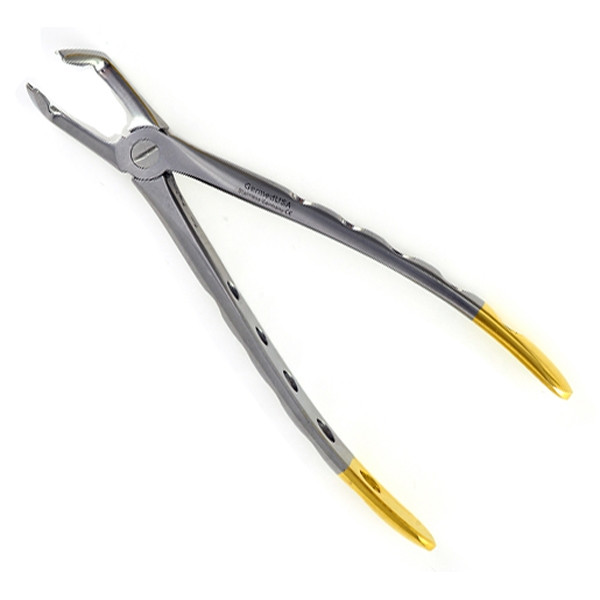
Extraction forceps are fundamental instruments for tooth extraction. Designed to grasp the tooth's crown firmly, they allow dentists to apply controlled force, helping to dislodge the tooth from its socket. Forceps are tailored for different types of teeth: molar forceps have curved beaks to grip molars' contours, while anterior forceps have straight beaks for incisors and canines. The beak of the forceps is shaped to conform to the tooth's root structure, providing a secure grip.
Features:
- Made of quality German stainless steel
- Ergonomic handles for firm grip and control
- Available in different types: Universal, Maxillary, Mandibular
- Rust-resistant and autoclavable for repeated use
Uses:
- Used to grasp and remove teeth from the socket.
- Designed for specific teeth, like molars or incisors, to maximize efficiency.
- Ensures minimal damage to surrounding tissues.
Types:
-
Universal Forceps: Suitable for multiple teeth types.
-
Maxillary and Mandibular Forceps: Specific to upper and lower teeth, respectively.
Enhance your extraction procedures with our quality Extraction Forceps, crafted for precision and comfort.
Browse our collection and make informed decisions.
Dental Elevators: The Backbone of Tooth Extraction Instruments
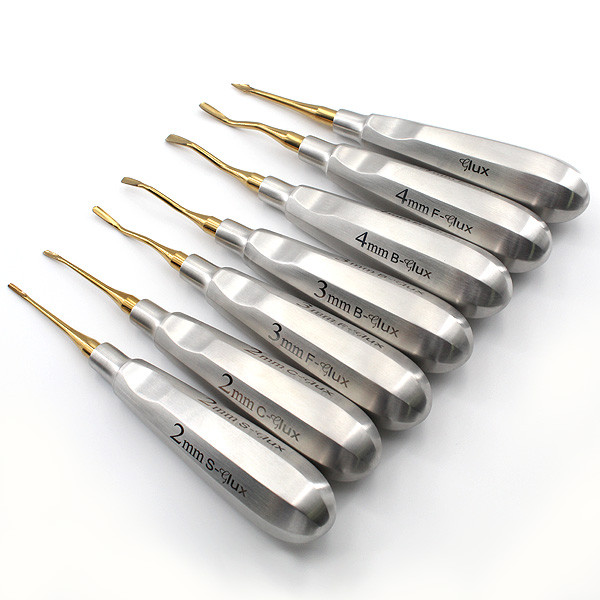
Dental elevators are pivotal in loosening teeth from their sockets before using extraction forceps. These instruments work on the principle of leverage, minimizing damage to surrounding tissues.
Elevators come in several types, such as straight elevators, which are reliable for most extractions, and curved elevators, designed for specific cases like posterior teeth extractions.
Features:
- Angulated tips for easy insertion between tooth and bone
- Robust, non-slip handle design
- Available in various types: Straight, Cryer, and Luxating
Uses:
- Loosens teeth or roots before extraction
- Minimizes trauma to the surrounding bone and tissues
Types:
-
Straight Elevators
Commonly used for loosening teeth
-
Cryer Elevator
It is ideal for removing broken root fragments
-
Luxating Elevators
Thin blades designed to cut periodontal ligaments
Elevate your practice with our dental elevators, which are manufactured for optimal performance in tooth extractions.
Periotomes
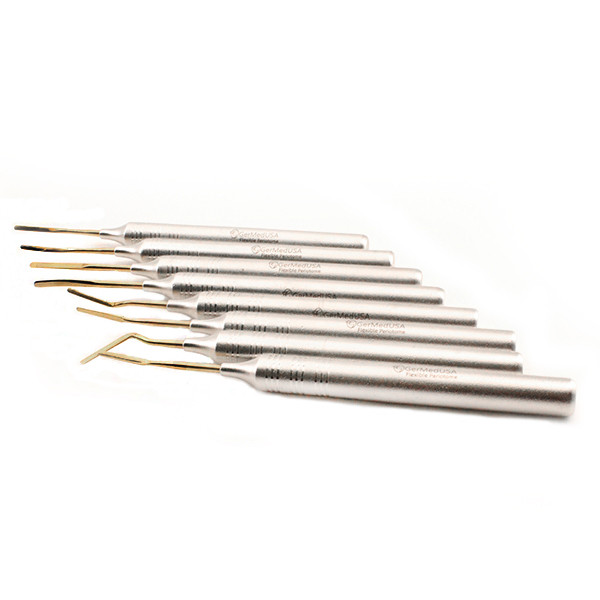
Periosteal elevators are specialized extraction tooth instruments that separate and retract the periosteum from the bone during oral surgery. These tooth extraction instruments are critical for reflecting soft tissue flaps, ensuring a clear and controlled surgical field.
Features:
- Thin, sharp blades made from surgical-grade stainless steel
- Designed to sever the periodontal ligament with precision
- Available in multiple variations
Uses:
- Atraumatic tooth extraction, preserving bone integrity
- These tooth extraction instruments prepare sockets for dental implants
Types:
-
Manual Periotomes
Controlled hand pressure for precision.
-
Powered Periotomes
Enhanced efficiency with minimal effort.
Experience the precision of our Luxating Elevators for atraumatic and efficient extractions.
Explore our Periotomes and add to the cart in just a few clicks.
Root Tip Picks
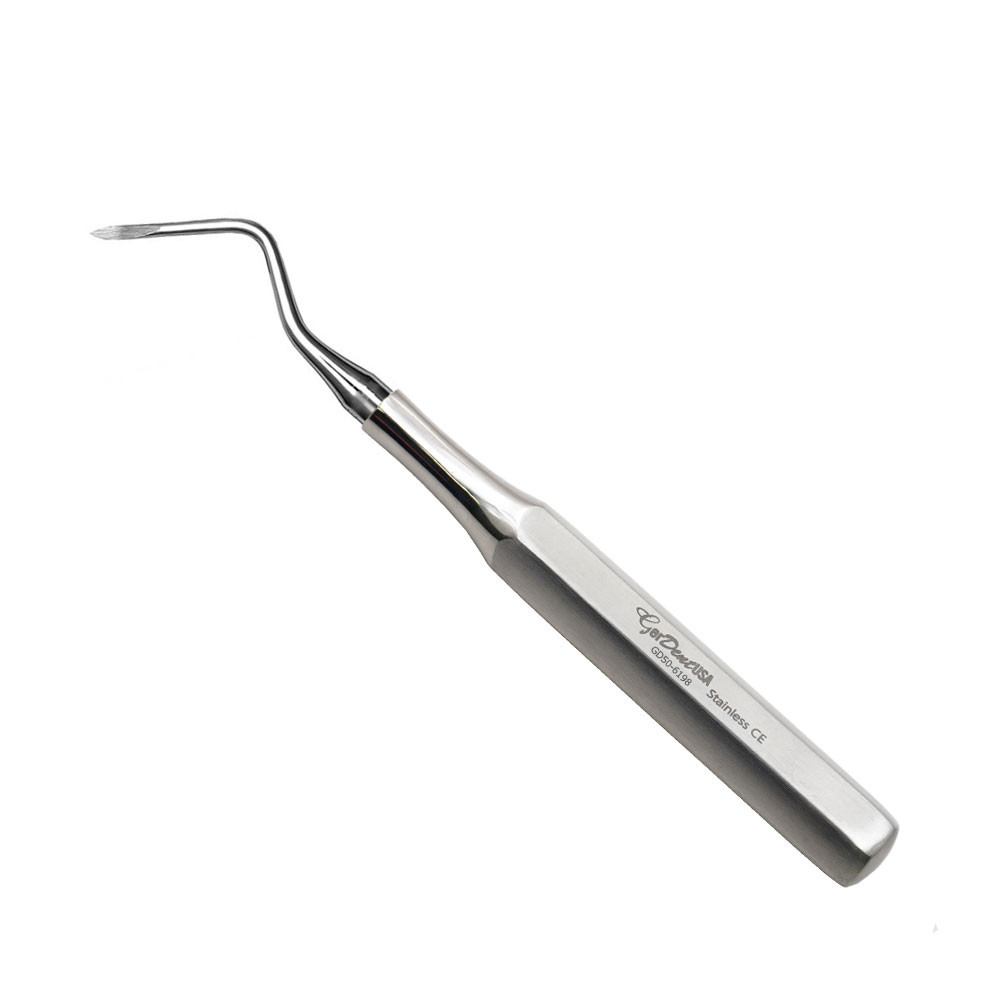
Root tip picks are designed to remove broken root fragments that may remain in the socket after tooth extraction. These slender, pointed instruments allow dentists to reach deep into the socket without causing significant trauma to the surrounding bone or soft tissues. Root tip picks are essential tooth extraction instruments for meticulous extraction procedures and are available in straight and angled variations.
Features:
- Narrow, pointed tips to access small areas
- Delicate design for careful extraction of root fragments
- Made from quality stainless steel
Uses:
- Remove small root tips or fragments that remain in the socket after extraction
- Useful in delicate and confined surgical areas
Achieve exceptional precision with our Root Tip Picks, designed for challenging extractions. View Products
Surgical Curettes
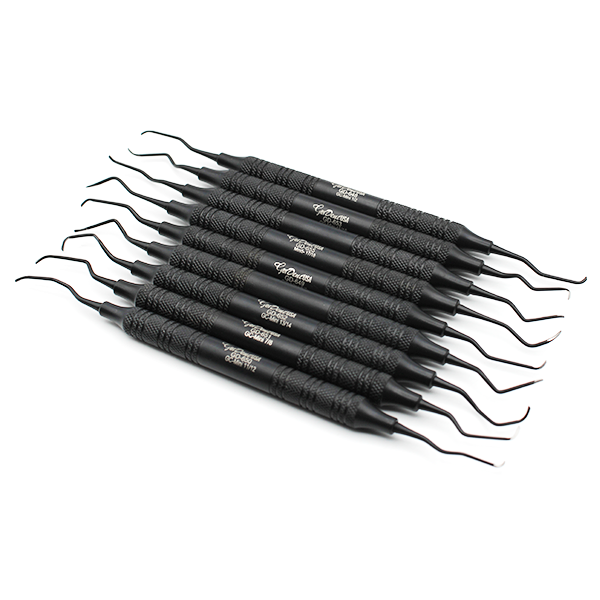
Surgical curettes are vital instruments in dental extractions, designed to clean and prepare the extraction site. These spoon-shaped instruments, featuring sharp edges and various sizes, effectively remove debris, granulation tissue, and bone fragments from the socket.
Their curved design allows for precise cleaning and smoothing of the area, ensuring a clean site for optimal healing and reducing the risk of infection. Incorporating quality curettes into your practice enhances procedural outcomes and supports better patient recovery.
Features:
- Spoon-shaped, stainless-steel blades
- Available in multiple sizes for various dental needs
- Autoclavable and reusable
Uses:
- Scrapes away granulation tissue, debris, or infected tissues.
- Often used after tooth extraction to clean the socket area.
Equip your clinic with our handy surgical curettes, perfect for a range of surgical procedures.
Rongeurs
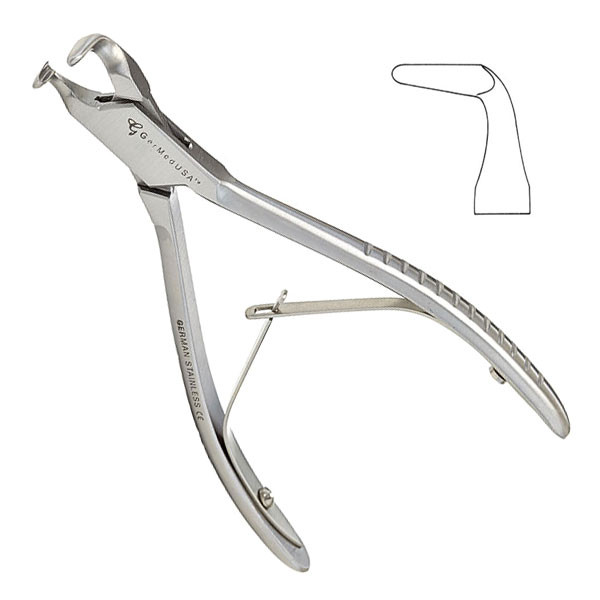
Bone rongeurs trim and remove bone during extractions and other surgical procedures. They have sharp, strong beaks that allow for precise cutting and removal of bone, facilitating better access to the tooth or surgical site.
Features:
- Spring-loaded handles for smooth operation
- Sharp, beak-like tips for effective bone-cutting
- High-grade materials for durability
Uses:
- Cut and contour bone during tooth extraction or oral surgery.
- Helps in removing sharp bone edges that could cause discomfort.
Improve your surgical efficiency with our Bone Rongeurs, crafted for precision and reliability. Shop Now!
Bone Chisels and Mallets
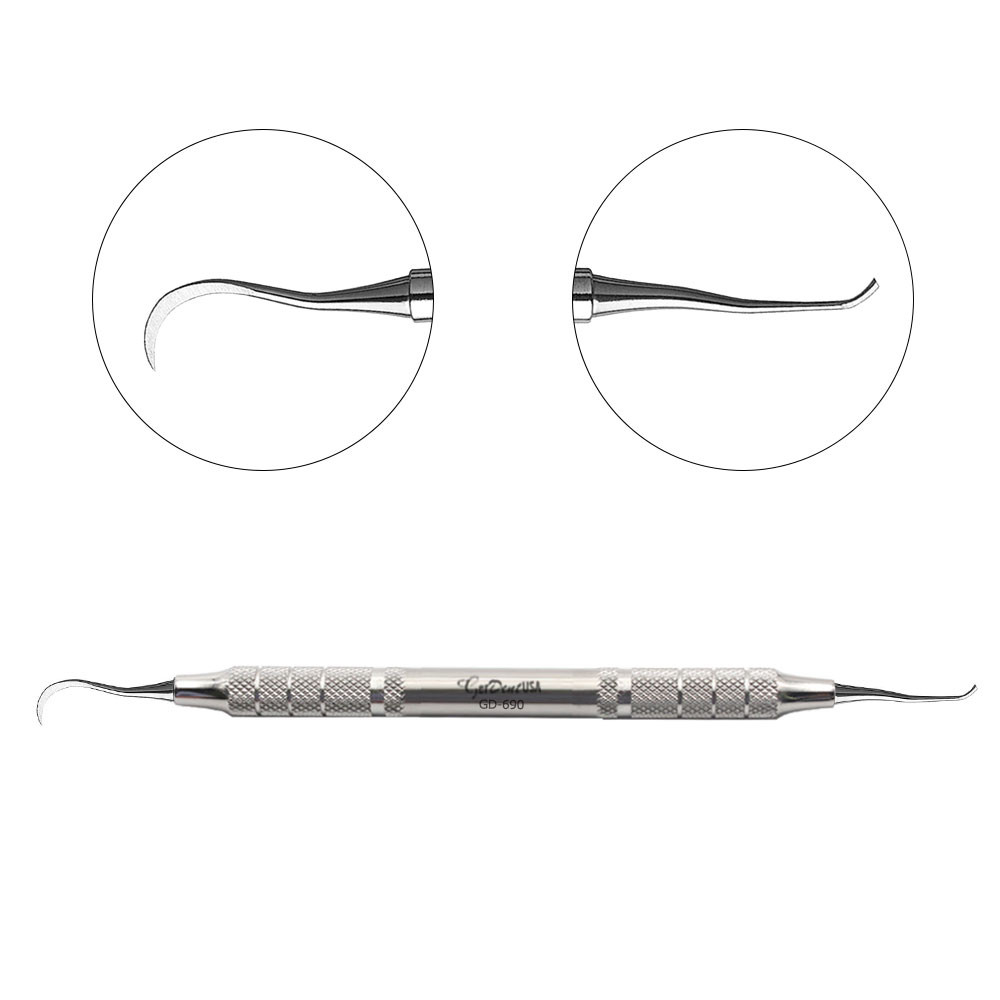
Surgical chisels and mallets are advanced tooth extraction tools, especially when a tooth needs to be sectioned or when bone needs to be removed to access the tooth. The chisel's sharp blade helps split the tooth, while the mallet provides the necessary force.
Bone chisels are essential oral surgery tools.
Features:
- Tapered or straight blades made from durable steel
- Balanced weight mallets for precision strikes
- Available in various sizes for different procedures
Uses:
- Split and remove bone fragments around the tooth.
- Used in complex extractions involving bone removal.
Find the perfect surgical implants and mallets for your advanced dental surgeries.
Surgical Scissors
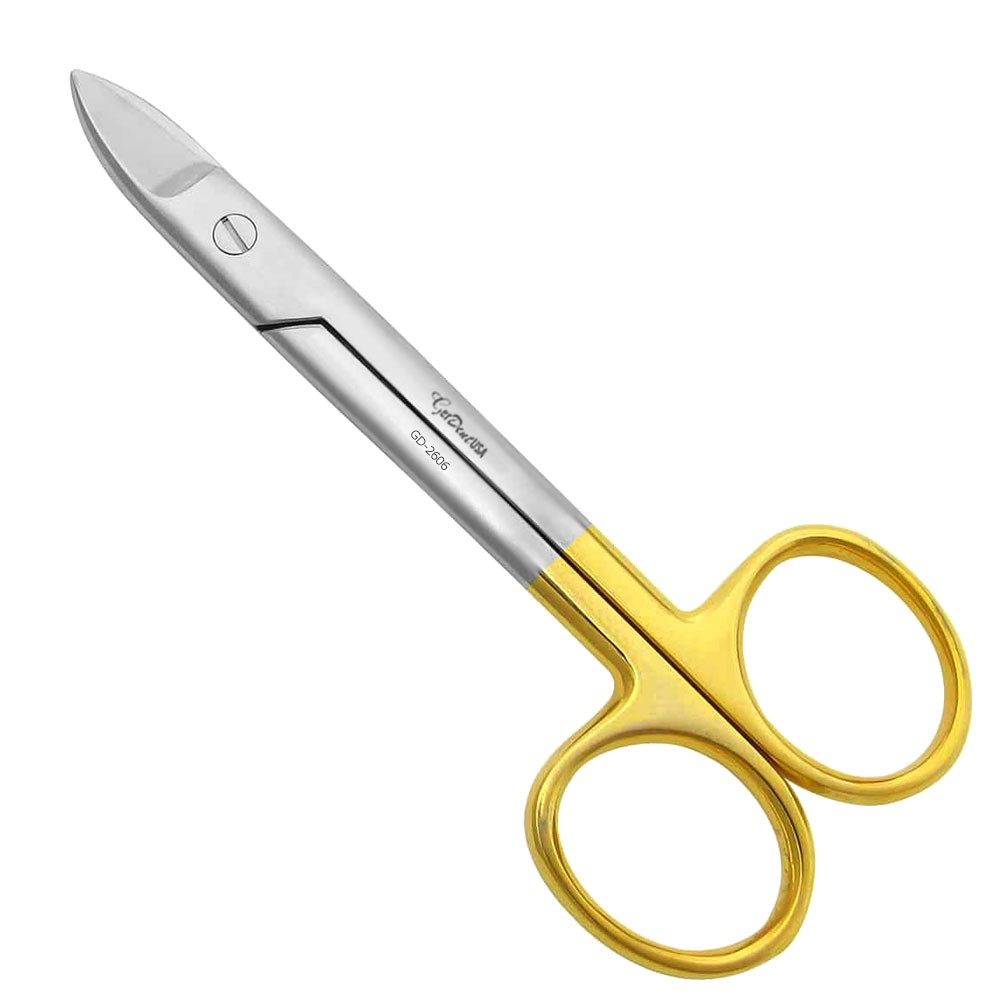
Surgical scissors are instruments specifically crafted for cutting tasks during dental surgical procedures. They come in different shapes and sizes, each tailored for specific functions such as cutting soft tissues or sutures. The blades can be straight or curved, allowing for versatility in accessing different areas.
Features:
- Sharp, durable blades available in straight or curved varieties
- Lightweight design for ease of use
- Multiple sizes for different surgical applications
Uses:
- Cut soft tissues or suture threads during dental surgeries.
- Essential for both simple and complex oral surgical procedures.
Improve your dental surgical efficiency with our surgical scissors, crafted for precision and reliability.
Anglevator
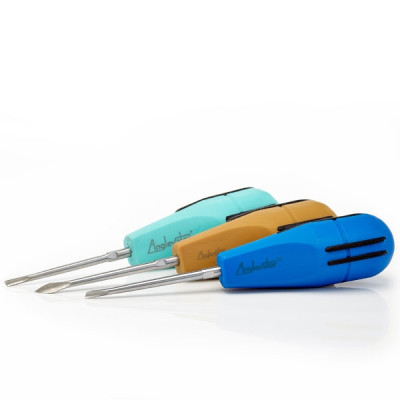
The Anglevator is a hybrid instrument that merges the functionalities of 6 dental tools. It’s ideal for atraumatic tooth extractions, effectively separating the tooth from its socket while preserving surrounding bone.
Features:
- Combines the functionality of an elevator and luxation
- Sharp tip with an ergonomic handle for better control
- Made from premium stainless steel for longevity
Uses:
- Elevate and luxate teeth efficiently with a single instrument.
- Ideal for both simple and complex extractions.
Transform your extractions with the Anglevator—an essential addition to any dental toolkit.
How to Choose the Right Tooth Extraction Instruments
Choosing the right tooth extraction instruments is crucial for ensuring successful procedures and optimal patient outcomes.
Here are key points to consider when selecting these dental instruments:
- Determine the procedure type
- Assess instrument quality
- Consider instrument size and shape
- Evaluate ergonomic design
- Check for compatibility
- Prioritize sterilization and maintenance
- Consult reviews and recommendations
- Evaluate cost vs. benefit
- Verify the manufacturer's reputation
Order Atraumatic Extraction Instruments from GerDentUSA
At GerDentUSA, we aim to provide you with quality, long-lasting tooth extraction instruments you can rely on to confidently perform atraumatic extractions for years to come, saving you time and improving your patient experience.
Our instruments and tooth removal kits are crafted from German stainless steel and are designed to offer precision, durability, and comfort for the practitioner and the patient.
We are proud to provide quality instruments at some of the best prices in the industry. We manufacture and sell our supplies directly to you, removing the middleman from the equation — which means we can pass those savings to you.
FAQs
What are the most commonly used instruments for tooth extraction?
The most commonly used extraction tooth instruments include extraction forceps, dental elevators, periotomes, and surgical curettes.
Why are German stainless steel instruments preferred?
German stainless steel is renowned for its durability, rust resistance, and ability to withstand repeated sterilizations, making it ideal for dental instruments.
What is the purpose of the Anglevator in dental surgery?
The Anglevator is designed to elevate and luxate teeth efficiently, combining the functions of both an elevator and luxator, which reduces the need for multiple tools during extraction.

